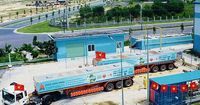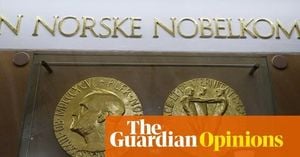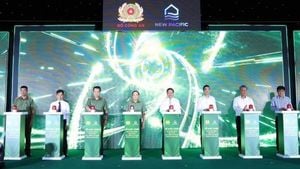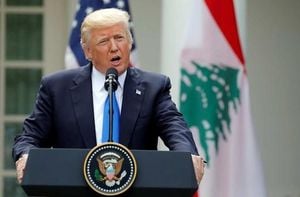In a rapidly shifting Asian economic landscape, two nations—Pakistan and Vietnam—are setting ambitious goals to transform themselves into regional powerhouses. Leaders in both countries have invoked the storied legacy of Asia’s “tiger economies,” a group that once included South Korea, Singapore, Hong Kong, and Taiwan, as they chart bold new courses for their own futures. Yet, while their aspirations may be similar, the challenges and strategies each faces reveal the complexity behind the quest for prosperity in the 21st century.
On August 16, 2025, SM Tanveer, Patron-in-Chief of Pakistan’s United Business Group (UBG), delivered a direct and urgent message at a press conference in Karachi: “Pakistan must become an ‘Asian Tiger’ to rival India.” According to Dunya News, Tanveer’s remarks were not just rhetorical; they were a call to action for a country of 250 million people, governed by just four provinces, to embrace economic reform and regional competition head-on. “India will not slow down in its competition with China,” he warned, underscoring the need for Pakistan to strengthen its own economic foundations if it hopes to keep pace with its neighbors.
Tanveer’s vision rests on a series of concrete targets and critiques. He welcomed recent reductions in electricity tariffs but insisted that further reforms are needed, specifically aiming to lower power costs to Rs26 per unit. This, he argued, would unlock development across all sectors and help the government achieve its ambitious goal of raising exports to $100 billion. “With our present trajectory, this is not sustainable,” Tanveer cautioned, referencing Pakistan’s $4–5 trillion in untapped natural resources and its current GDP of $412 billion. The gap between potential and reality, he suggested, is largely due to structural inefficiencies and missed opportunities.
Pakistan’s economic woes are not limited to energy and exports. Tanveer pointed to unemployment and inflation as the main barriers to progress. He was particularly critical of the National Finance Commission (NFC) Award, which allocates 42 percent of resources to the federal government and 58 percent to the provinces. Despite these allocations, he noted, the benefits seldom reach the grassroots. “There is a lack of ownership at divisional levels,” Tanveer observed, highlighting the frequent transfer of commissioners—often within just six months—as a symptom of deeper governance issues. He called for more localized economic organization, suggesting that real progress requires action at the district and divisional levels, not just in Islamabad or provincial capitals.
Regional dynamics also loom large in Tanveer’s analysis. He questioned Pakistan’s reluctance to purchase oil from neighboring Iran, despite sharing a border—a policy stance that, in his view, undermines national interests. At the same time, he welcomed the prospect of increased U.S. investment in Pakistan, describing it as “a positive sign for the future.” Importantly, Tanveer was careful to clarify that the United Business Group’s mission is not political but focused on identifying and addressing the country’s most pressing economic issues.
While Pakistan grapples with these internal and external challenges, Vietnam is also embarking on a transformative journey. On the very same day as Tanveer’s press conference, Vietnam’s Communist Party chief To Lam declared the start of “a new era of development” at the party’s central school in Hanoi. As reported by Reuters, the Vietnamese government has set its sights on achieving high-income status by 2045 and joining the ranks of Asia’s “tiger economies.”
Vietnam’s economic story over the past three decades is nothing short of remarkable. Since 1990, the country’s per-capita income has soared from about US$1,200 to $16,385 (adjusted for local prices as of 2025). This export-led boom has built modern infrastructure and lifted millions out of poverty. Yet, as officials acknowledge, the era of easy gains from cheap labor is coming to an end. Growth is slowing, and the country faces a daunting array of challenges: structural reforms, an aging population, climate risks, and entrenched bureaucracy.
To address these issues, Vietnam is pursuing a multi-pronged strategy. One major initiative is the planned $67 billion high-speed rail project linking Hanoi and Ho Chi Minh City—a symbol of the country’s infrastructure ambitions. At the policy level, a watershed moment came in May 2025 with the passage of Resolution 68, which for the first time elevated private firms as the “most important force” in the economy. For decades, state-owned giants had dominated, leaving local firms in low-value supply-chain roles. The new policy promises easier loans for tech investments, priority in government contracts, and support for overseas expansion. By 2030, Vietnam hopes to produce at least 20 globally competitive private companies.
But the road ahead is fraught with risks. Climate change is perhaps the most immediate threat. Typhoon Yagi, which struck last year, caused $1.6 billion in damage and shaved 0.15 percent off GDP. The World Bank has issued a stark warning: without decisive action, Vietnam could lose up to 14.5 percent of its GDP annually by 2050 due to climate-related disasters. Some companies are already adapting. For example, DEEP C Industrial Zones redesigned their facilities for flood resilience after losing an investor over climate risks—a move that paid off when their sites stayed dry during Yagi’s floods.
Demographic trends add another layer of complexity. Vietnam’s so-called “golden population” window will close by 2039, with the workforce peaking in 2042. An aging society could slow productivity and strain social services. The government is responding by expanding preventive healthcare, gradually raising retirement ages, and encouraging more women to join the formal workforce—all measures aimed at sustaining growth and promoting “healthy aging.”
Vietnam is not alone in facing external pressures. U.S.–China trade tensions have fueled a surge in foreign investment, making the U.S. Vietnam’s largest export market. In 2024, Vietnam ran a $123.5 billion trade surplus with the U.S., prompting then-President Donald Trump to threaten a 46 percent tariff on Vietnamese goods. Ultimately, the two sides agreed on a 20 percent levy, doubled for goods suspected of being rerouted from China. Even before this tariff battle, Vietnamese officials were rethinking the country’s growth model to avoid the so-called “middle-income trap”—a fate that befalls economies unable to transition to higher-value industries.
For both Pakistan and Vietnam, the journey to “tiger” status is as much about overcoming internal inertia as it is about seizing global opportunities. Pakistan’s leaders are calling for reforms that would unlock the country’s vast natural resources and better organize its sprawling population. Vietnam, meanwhile, is betting on private enterprise, infrastructure, and climate resilience as it seeks to leap from middle-income to high-income status within two decades.
As Asia’s economic landscape continues to evolve, the stories of Pakistan and Vietnam offer a window into the hopes, hurdles, and hard choices facing nations determined to write their own chapters in the region’s growth saga. Whether these aspirations will translate into lasting prosperity remains to be seen, but the race to join the ranks of Asia’s “tiger economies” is very much on.




